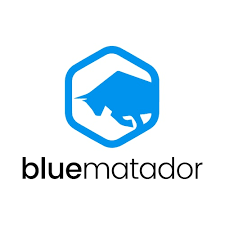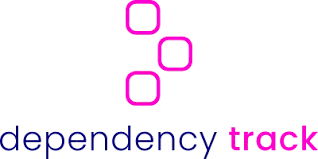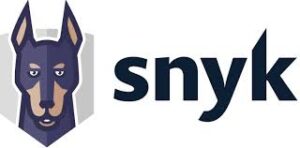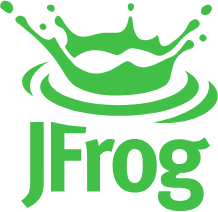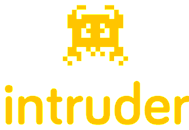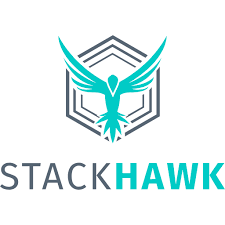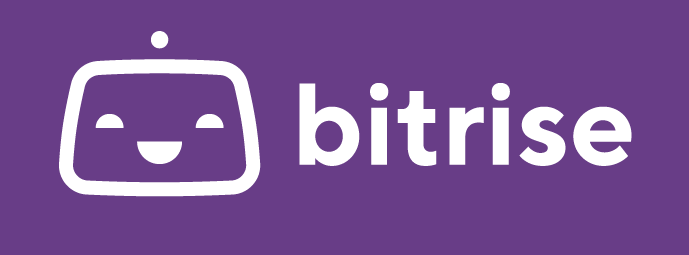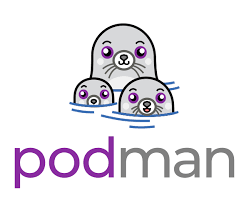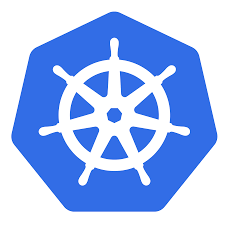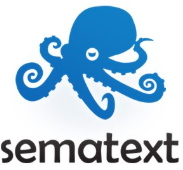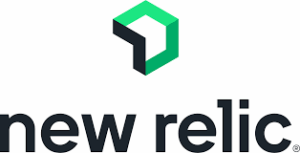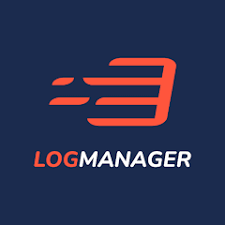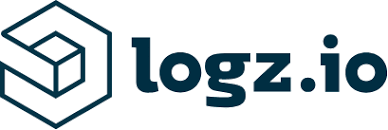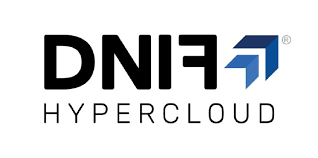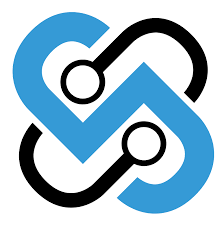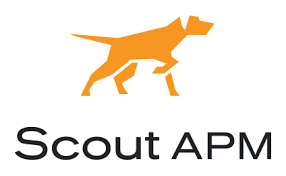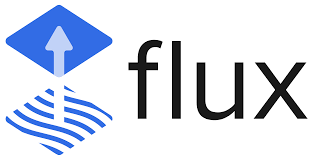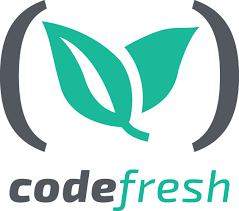TestNG served its purpose for years, but dragging around heavy XML configs, wrestling with parallel execution quirks, and waiting on clunky reports in 2026 feels like punishment. Teams moving fast today want something that just works out of the box – clean annotations, instant parallel runs, beautiful dashboards, and no surprise infrastructure bills when the test suite grows.
The good news? A handful of modern platforms have stepped up and basically solved the “testing framework shouldn’t be the bottleneck” problem. They handle the boring parts automatically (sharding, retries, reporting, CI integration) so developers can get back to writing features instead of fighting the test runner.
Here are the top alternatives that real teams are switching to right now – and why the jump suddenly feels obvious once you try them.

1. AppFirst
Developers declare CPU, memory, database, and networking needs in simple manifests, then AppFirst spins up VPCs, security groups, observability stacks, and cost tagging across AWS, Azure, or GCP without hand-written Terraform. Apps deploy with built-in logging, metrics, and alerts, while audit trails track every infra change centrally. SaaS or self-hosted options exist, giving control over data location.
It removes the whole infra-as-code burden so feature work stays front and center. Switching clouds later just flips a flag instead of rewriting modules, which appeals to product-focused outfits tired of DevOps tax.
Wichtigste Highlights
- Manifest defines app needs, platform handles the rest
- Auto-provisions compliant VPCs and security rules
- Cost and audit logs broken down by app/environment
- Works on AWS, Azure, and GCP interchangeably
- SaaS or self-hosted deployment available
Profis
- No Terraform or YAML maintenance required
- Cloud switches without redeploy headaches
- Observability and alerting included by default
- Audit trails cover every provisioned resource
- Onboarding skips infra training entirely
Nachteile
- Less visibility into low-level cloud configs
- Vendor lock to their manifest format
- Self-hosting adds operational overhead
- Limited to supported resource types
- Pricing details hidden behind contact forms
Kontaktinformationen
- Website: www.appfirst.dev

2. Boozang
Users build tests visually within a browser, linking modules for UI actions and API calls to create end-to-end flows. This setup lets flows adapt to app changes without full rewrites, pulling in data management and visualization right in the interface. Debug steps happen line by line with developer tools, and selectors lean on natural language for fewer flakes compared to older methods. Cucumber ties in for links to tools like Jira, while recordings kick off scenarios quickly, especially around tricky spots like authentication.
The platform splits into tiers starting with a free community option for one user and project, covering unlimited API actions and basic CI hooks, no card needed. Paid plans add Cucumber depth, model-based builds, and unlimited parallel runs with AI generation, reached via contact for custom fits. Early adopters note a learning curve on features but praise quick support fixes and how it cuts setup time versus script-heavy alternatives.
Wichtigste Highlights
- Browser-based codeless flows for UI and API under one view
- Modular building blocks reuse across tests for maintenance ease
- Root cause tracking spots issues beyond surface fails
- Docker parallels and Jenkins plugs handle scaling runs
- Recordings bootstrap scenarios fast, auth included
Profis
- Documentation and videos ease solo learning for non-coders
- Support tweaks features on request, bugs resolve swiftly
- Data-oriented chunks make suites reusable and quick to run
- Load elements test real scenarios without extra tools
- Visual maps outline app logic for clearer oversight
Nachteile
- Some functions like file handling need more robustness
- Early versions had bugs, though fixed over time
- Feature depth hides at first, takes practice to uncover
- Execution speed depends on smart structuring
- Glitches pop up occasionally, demand close watch
Kontaktinformationen
- Website: boozang.com
- Email: hello@boozang.com
- LinkedIn: www.linkedin.com/company/boozang
- Facebook: www.facebook.com/boozangcloud
- Twitter: x.com/boozangcloud

3. Parasoft
Tools like Jtest weave into IDEs and pipelines for Java coverage via JUnit, flagging security gaps and reliability hits during code pushes. Shift-left catches defects pre-release, while API layers use AI to spin functional checks into load or security scans without rework. Virtualization mocks environments for anytime testing, and impact analysis runs only changed code tests to trim regression drags. Aggregated views in DTP correlate static scans, units, and coverage for compliance traces across cycles.
Selenic patches Selenium instabilities with self-healing, and SOAtest automates REST or SOAP with codeless creation for multi-interface apps. CTP diagrams dependencies to provision full environments on the fly, syncing with CI for seamless execution. Outcomes show cycles speeding up, like virtualization slashing manual weeks to minutes or analysis cutting 90 percent off regression time, all without lock-in.
Wichtigste Highlights
- Tight IDE and CI embeds for real-time feedback on Java quality
- AI turns API tests into security or performance variants
- Virtual services simulate data when access lags
- Coverage and traceability reports enforce standards automatically
- Self-healing fixes common web UI test breaks
Profis
- Broad practices automate for C#, .NET, and embedded alongside Java
- Intuitive interfaces debug failures with less hassle
- Correlated data highlights changed code impacts
- Compliance dashboards prove traces for critical sectors
- Open-source framework ties boost efficiency in pipelines
Nachteile
- Setup spans multiple tools for full coverage
- Depth suits enterprises more than quick solos
- Learning curve on virtualization for complex mocks
- Analytics demand consistent data feeds to shine
- Vendor tools integrate but need config tweaks
Kontaktinformationen
- Website: www.parasoft.com
- Phone: +1 888 305 0041
- E-Mail: info@parasoft.com
- Address: 101 E. Huntington Drive, Second Floor, Monrovia, CA 91016 USA
- LinkedIn: www.linkedin.com/company/parasoft
- Facebook: www.facebook.com/parasoftcorporation
- Twitter: x.com/parasoft
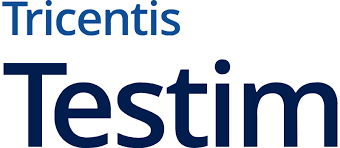
4. Testim
AI agents pull tests from natural language descriptions, using custom workers to handle web, mobile, or Salesforce clicks without manual scripting. Locators learn app elements via ML, self-healing as updates roll in to keep suites stable across browsers or devices. Cloud grids run parallels for check-ins or full regressions, plugging into Jenkins or GitHub for release gates. Quality layers with SeaLights map changes to tests, closing code gaps and trimming blind spots before production hits.
Authoring mixes recording with code tweaks if needed, while troubleshooting pins failures fast. Stability holds through app shifts, and management shares visibility for dev handoffs. Workshops turn hours into dozens of lasting E2E checks, with authoring drops from days to minutes noted in shifts.
Wichtigste Highlights
- Natural language sparks autonomous test builds
- ML locators adapt to element changes on the fly
- Cloud parallels cover browsers and virtual mobiles
- CI/CD hooks test code pushes or scheduled suites
- Change mapping optimizes runs to cut waste
Profis
- Recordings grab elements across app types effortlessly
- Stability cuts fix time, bugs drop noticeably
- Collaboration views scale team oversight
- Risk insights focus efforts on weak spots
- Flexible code adds depth where recordings fall short
Nachteile
- Agent reliance assumes clear descriptions upfront
- Cloud focus limits some on-prem prefs
- Integration setup varies by tool depth
- Analytics tie best with add-ons like SeaLights
- Early workshops pack value but need follow-through
Kontaktinformationen
- Website: www.testim.io
- Address: 5301 Southwest Pkwy., Building 2, Suite 200
- LinkedIn: www.linkedin.com/company/testim-io
- Facebook: www.facebook.com/testimdotio
- Twitter: x.com/testim_io

5. Sahi Pro
Users record actions across web browsers, desktop apps, and mobile setups using a single recorder that handles elements without XPath hassles, letting scripts play back smoothly even if the browser wanders out of focus. Automatic waits kick in for AJAX loads or page shifts, and auto-healing tweaks locators when apps update, while OCR steps in for tricky image-based checks. Parallel runs distribute across machines for quicker suites, and built-in logs capture every detail without extra plugins, keeping the focus on spotting real issues rather than chasing flakes.
Support logs show quick responses to tickets and hands-on sessions for setups, drawing from years of handling varied QA puzzles. Comparisons highlight how it skips the need for separate libraries per browser or constant updates for new versions, though that ease comes with a nod to basic scripting knowledge for deeper tweaks. One tool covers web services, SAP, and Java bits too, folding them into the same flows without switching contexts.
Wichtigste Highlights
- Recorder spies objects across browsers, desktop, mobile, and SAP
- Smart accessors avoid brittle HTML ties for stable plays
- Inbuilt reports and CI hooks handle analysis out of the box
- Distributed playback scales suites without custom frames
- OCR handles visual edges where standard locators falter
Profis
- Minimal tech know-how gets complex scenarios running fast
- No browser focus breaks or wait scripts to add manually
- Support dives into POCs and trainings for smooth starts
- Cross-tech coverage means one script for mixed apps
- Quick playback speeds up regressions noticeably
Nachteile
- Basic scripting pops up for conditional browser logic
- Rare updates needed for fresh browser drops
- OCR adds steps for heavy image reliance
- Parallel setup requires machine configs upfront
- Logs detail well but can overwhelm small runs
Kontaktinformationen
- Website: www.sahipro.com
- Phone: +91 98400 33988
- Email: info@sahipro.com
- Address: B.C.P. Towers, 386, 9th Main, HSR Layout, Sector 7, Bangalore 560102
- LinkedIn: www.linkedin.com/showcase/sahipro
- Facebook: www.facebook.com/sahipro
- Twitter: x.com/sahipro

6. BrowserStack
Cloud access lets testers poke at sites and apps on actual browsers and devices, mixing manual clicks with automated grids for coverage across OS combos. AI layers in to flag visuals or accessibility snags, pulling from a shared data pool to suggest fixes mid-cycle, while Percy tools review UI shifts without full reruns. Management dashboards track cases and analytics, optimizing what runs next based on code diffs or risk spots.
Stories from users point to cloud shifts easing dev gripes, like slashing manual hours or doubling release paces through pipeline ties. Integrations hook into Jenkins for commit triggers or Jira for bug snaps, and even non-prod Firebase apps get spun up for checks. That breadth suits scaling teams, though it leans heavy on cloud uptime for spotless flows.
Wichtigste Highlights
- Real-device clouds run iOS and Android without local farms
- Visual diffs catch layout drifts across browser flavors
- Accessibility scans check WCAG rules in one pass
- CI results feed straight to Slack or GitLab dashboards
- Low-code options record flows sans deep scripting
Profis
- Device variety mirrors user setups without hardware buys
- AI speeds cycles by targeting changed bits only
- Bug repro links save chase time in Jira
- Cross-tool plugs fit existing workflows neatly
- Analytics spot coverage holes before they bite
Nachteile
- Cloud reliance means net hiccups delay sessions
- Visual tools need review loops for false flags
- Management unifies but adds layer for solos
- Device queues build during peak automations
- Accessibility depth varies by standard focus
Kontaktinformationen
- Website: www.browserstack.com
- Telefon: +1 (409) 230-0346
- E-Mail: support@browserstack.com
- LinkedIn: www.linkedin.com/company/browserstack
- Facebook: www.facebook.com/BrowserStack
- Twitter: x.com/browserstack
- Instagram: www.instagram.com/browserstack

7. Testsigma
AI agents like Atto spin plain English steps into full tests for web pages, pulling in browser-device mixes without setup fiddles, then optimize executions by tweaking flaky spots on the fly. Copilot analyzes runs post-facto, highlighting gaps in coverage or sprint risks, while recorders capture mobile swipes or API calls for hybrid flows. The unified dashboard folds in Salesforce or SAP checks too, running parallels on cloud farms or local setups for flexible pacing.
Feedback echoes how it flips weeks of scripting into quick generations, with overnight suites feeding morning fixes via logs and videos. Integrations weave into Azure DevOps or Bamboo for CI gates, and debugger pauses let peeks at failures with screenshots intact. That agentic nudge keeps maintenance light, even as apps evolve, though it shines brightest when descriptions land clear upfront.
Wichtigste Highlights
- NLP turns descriptions into web or API steps autonomously
- Cloud spans thousands of browser-device pairs
- Risk plans auto-adjust for sprint shifts
- Recorder grabs mobile and ERP actions in one go
- Insights map passed fails to code lines
Profis
- Generation cuts creation from scratch to minutes
- Auto-optimizes suites for fewer manual tweaks
- Overnight runs deliver results with media proof
- Tool ties boost CI feedback loops
- Coverage gaps surface early for targeted fills
Nachteile
- Agent outputs hinge on precise English inputs
- Local farm ties need config for hybrid runs
- Analytics layer adds overhead for light users
- ERP depth requires app-specific tweaks
- Debugger pauses can slow debug in long flows
Kontaktinformationen
- Website: testsigma.com
- Email: sales@testsigma.com
- Address: 355 Bryant Street, Suite 403, San Francisco, CA 94107
- LinkedIn: www.linkedin.com/company/testsigma
- Twitter: x.com/testsigmainc

8. Cucumber
Plain text files outline features with scenarios in Given-When-Then steps, turning acceptance checks into readable specs that hook into code backends for automated runs. BDD roots let non-tech folks draft flows, like balance rules for cash pulls, while the engine executes them across tied platforms without losing the human touch. Over two dozen tech stacks plug in, from web frames to mobile runners, keeping the language layer consistent amid varied underbellies.
Tutorials ramp up quick setups, and the open pledge nods to community upkeep, avoiding burnout on core bits. That readability bridges gaps in handoffs, though it pairs best with solid step defs to avoid vague executions. Examples show how rules bundle scenarios neatly, fostering trust through shared understanding over buried scripts.
Wichtigste Highlights
- Gherkin syntax crafts scenarios in everyday words
- BDD process aligns tests to behavior specs
- Hooks span web, mobile, and API backends
- Readable files ease collab across roles
- Open-source core invites community tweaks
Profis
- Plain language specs clarify intent sans code dives
- Quick tutorials get basics rolling in minutes
- Platform count covers diverse stack needs
- Rule groupings organize complex feature checks
- Community pledge sustains long-term viability
Nachteile
- Step defs demand code ties for full automation
- Vague phrasings lead to execution mismatches
- Platform plugs vary in maturity levels
- BDD learning curve slows initial adoptions
- File sprawl hits big feature sets without tools
Kontaktinformationen
- Website: cucumber.io

9. Robot Framework
Users write tests in a readable, keyword-driven style that looks almost like plain English, or they pull in data tables for bigger batches. The core stays open source with no licensing costs, and extensions come through libraries written in Python or Java that hook into everything from web browsers to databases and SSH sessions. Community contributions keep adding new libraries, so the same framework handles acceptance tests one day and robotic process automation the next without switching tools.
Conferences and online workshops pop up regularly, plus an annual RoboCon that mixes in-person and remote sessions. Certification exists for anyone wanting a formal stamp, and the foundation behind it funds ongoing work while keeping the whole thing free to use. Most setups start with a simple pip install and grow from there as needs change.
Wichtigste Highlights:
- Keyword syntax works with tables or plain text
- Libraries extend to web, mobile, API, database, SSH
- No license fees for core or standard libraries
- Active foundation funds development
- Yearly RoboCon plus smaller meetups
Dienstleistungen:
- Test automation across UI, API, and desktop
- Robotic process automation workflows
- Acceptance testing with readable specs
- Browser and mobile testing via community libraries
- Database and SSH command execution
Kontaktinformationen:
- Website: robotframework.org
- Email: board@robotframework.org
- Address: Kampinkuja 2, 00100 Helsinki, Finland
- Facebook: www.facebook.com/robotframeworkofficial
- Twitter: x.com/robotframework
10. JUnit
Developers write assertions inside regular Java classes, marking methods with annotations so the runner picks them up and executes automatically. JUnit 6 runs on Java 17 or newer and supports Kotlin too, letting tests mix styles from simple units to parameterized batches. Extensions hook in extra behavior like timeouts or temporary folders without boilerplate in every file. The core stays deliberately small, leaving room for tools like Mockito or AssertJ to fill gaps.
Sponsors and backers keep the project moving, with gold-level support from IDE makers and streaming companies. Documentation lives in a user guide and Javadoc, while the GitHub repo handles issues and pull requests. Most Java shops already have it in the build, so adding a new test rarely means fighting dependencies.
Wichtigste Highlights
- Annotation-driven tests run with zero config in most builds
- Parameterized sources feed data sets into one method
- Extension model adds rules without inheritance chains
- Works natively with Maven, Gradle, and IDE runners
- Minimal core keeps upgrade friction low
Profis
- Familiar syntax for anyone who codes Java
- Fast execution on plain JVM, no external server
- IDE integration shows failures inline instantly
- Huge ecosystem of matchers and mocks available
- Version bumps rarely break existing suites
Nachteile
- No built-in parallel execution control
- Reporting stays basic without extra plugins
- Parameter handling needs explicit sources
- Dynamic test creation feels clunky
- HTML reports require separate tools
Kontaktinformationen
- Website: junit.org
11. Ranorex
Desktop, web, and mobile tests share one IDE where object recognition digs deep into custom controls and legacy interfaces that simpler tools skip. Users choose full code in C# or VB, or drag-drop modules for low-code flows, then run the same suite across platforms without rewriting steps. Self-healing tweaks locators when UI changes, and data-driven loops pull from Excel or databases for varied inputs. Integrations plug into Jenkins or Azure DevOps for nightly runs.
A companion tool called DesignWise uses AI to trim redundant cases before automation starts, feeding Gherkin-ready outlines straight into Studio. On-premise licensing and role-based access fit regulated environments, while a 14-day trial gives full Studio access without a card. It handles thick-client quirks that pure browser tools struggle with.
Wichtigste Highlights
- Single recorder captures desktop, web, and mobile actions
- Advanced recognition works on non-standard controls
- Low-code modules mix with scripted steps freely
- Data tables drive loops from CSV or databases
- Built-in object repository tracks changes
Profis
- Reliable identification on older Windows apps
- One license covers desktop plus web plus mobile
- Trial includes everything for two weeks
- CI plugins push results without custom code
- Self-healing cuts maintenance on big suites
Nachteile
- Heavier install compared to open-source options
- Learning curve steeper for low-code users
- Runtime modules needed on execution machines
- Pricing fits enterprises more than solos
- Mobile support lags behind pure cloud farms
Kontaktinformationen
- Website: www.ranorex.com
- Email: sales@ranorex.com
- Phone: +1727-835-5570
- Address: 4001 W. Parmer Lane, Suite 125, Austin, TX 78727, US
- LinkedIn: www.linkedin.com/company/ranorex-gmbh
- Facebook: www.facebook.com/Ranorex
- Twitter: x.com/ranorex
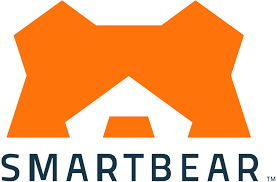
12. SmartBear
ReadyAPI bundles functional, performance, and security checks for REST, SOAP, Kafka, and database APIs into one low-code workspace, letting users spin tests from definitions or captured traffic. Functional suites reuse assertions across load scenarios, while virtualization mocks missing services with dynamic responses and error simulation, cutting waits on third-party endpoints. TestEngine scales SoapUI or ReadyAPI runs in parallel without managing grids, feeding results straight into Jenkins or Azure pipelines.
The platform handles everything from quick sanity checks to heavy spike loads, with detailed breakdowns of response times and bottlenecks. It fits shops already deep in CI/CD who want API quality baked in early, though the breadth means picking the right module for the job instead of firing up the whole suite every time.
Wichtigste Highlights
- Single interface covers functional, load, and security API tests
- Virtual services mimic REST, SOAP, and JMS behavior
- Reuses functional tests as performance baselines
- Parallel execution engine removes grid headaches
- Smart assertions catch issues without hard-coded values
Profis
- Imports OpenAPI or WSDL and generates tests fast
- Virtualization deploys in minutes for missing systems
- CI/CD integrations push results where devs look
- Load scripts reuse existing functional cases
- Detailed SLA reports spot slowdowns early
Nachteile
- Feature sprawl can overwhelm small API projects
- Licensing splits across functional, performance, virt modules
- Learning curve for advanced data-driven scenarios
- Virtualization setup needs some response modeling
- Pricing leans toward enterprise budgets
Kontaktinformationen
- Website: smartbear.com
- Telefon: +1 617-684-2600
- Email: info@smartbear.com
- Address: SmartBear Software, 450 Artisan Way, Somerville, MA 02145
- LinkedIn: www.linkedin.com/company/smartbear
- Facebook: www.facebook.com/smartbear
- Twitter: x.com/smartbear
- Instagram: www.instagram.com/smartbear_software

13. Katalon
Katalium wraps Selenium and TestNG into a lighter starter framework with built-in page objects, a tuned Selenium Grid called Katalium Server, and handy defaults in properties files. VS Code extensions spin up projects fast, auto-start the grid, and capture screenshots on failure without extra config. Tests stay plain TestNG classes, so migrating existing suites takes minimal changes.
It sits as a middle ground for folks who like Selenium/TestNG but want less boilerplate around drivers and grids. The server adds real-time session views and automatic logs, though the core remains open-source Selenium under the hood.
Wichtigste Highlights
- VS Code plugin scaffolds projects in clicks
- Katalium Server enhances standard Selenium Grid
- Pre-wired page object template and driver handling
- Properties file overrides browser or environment
- TestNG stays the execution engine
Profis
- Drops setup time for fresh Selenium/TestNG projects
- Grid monitoring and screenshots come built-in
- No vendor lock, pure Selenium under the hood
- Easy hand-off to existing TestNG knowledge
- Sample projects get running instantly
Nachteile
- Still requires writing Selenium code
- Grid enhancements limited versus full cloud farms
- Active development slower than pure community Selenium
- Some utilities tied to Katalon account login
- Mobile support leans on Appium separately
Kontaktinformationen
- Website: katalon.com
- Email: business@katalon.com
- Address: 1720 Peachtree Street NW, Suite 870, Atlanta, GA 30309
- LinkedIn: www.linkedin.com/company/katalon
- Facebook: www.facebook.com/KatalonPlatform
- Twitter: x.com/KatalonPlattform
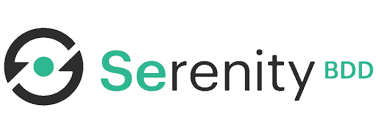
14. Serenity BDD
Tests live as living documentation that shows which requirements got covered and what actually ran, pulling screenshots and logs into readable reports. The framework sits on top of JUnit or Cucumber, so scenarios stay in standard Java while the reporting layer adds the extra context business folks can follow. Page objects shrink with reusable steps or switch to action classes and the Screenplay pattern for bigger suites.
It handles web UI with Selenium, REST calls with RestAssured, and mobile flows when paired with Appium, all feeding the same report format. Maintenance drops because failed steps highlight exactly where things broke, and the focus stays on behavior instead of low-level driver calls. Most projects start small and scale up without rewriting the original cases.
Wichtigste Highlights:
- Reports link tests to requirements with screenshots
- Works with JUnit, Cucumber, Selenium, RestAssured
- Screenplay pattern for scalable step libraries
- Automatic timing and performance data in reports
- Web, API, and mobile testing in one flow
Dienstleistungen:
- Automated acceptance and regression testing
- Living documentation generation
- Web UI testing with Selenium
- REST API testing with built-in steps
- Mobile testing via Appium integration
Kontaktinformationen:
- Website: serenity-bdd.github.io
Schlussfolgerung
TestNG had its moment, but honestly, clinging to XML configs and wrestling with parallel quirks in 2026 feels like showing up to a track meet in hiking boots. The tools out there now just get out of the way: some let you write plain English and watch tests build themselves, others give you real browsers on real devices without owning a single phone, a few flip the whole infra headache so you never touch Terraform again, and plenty sit quietly in the background making sure the tests you already have actually tell you something useful when they break.
At the end of the day, pick the one that removes the biggest paper cut in your current flow. If the suite takes forever to run, chase speed. If half the failures are locator garbage, grab something that heals itself. If you’re still copying XML around by hand, maybe it’s time to try literally anything else. The right alternative isn’t the shiniest one; it’s the one that finally lets you close the testing tab and go build the next feature without looking back.












